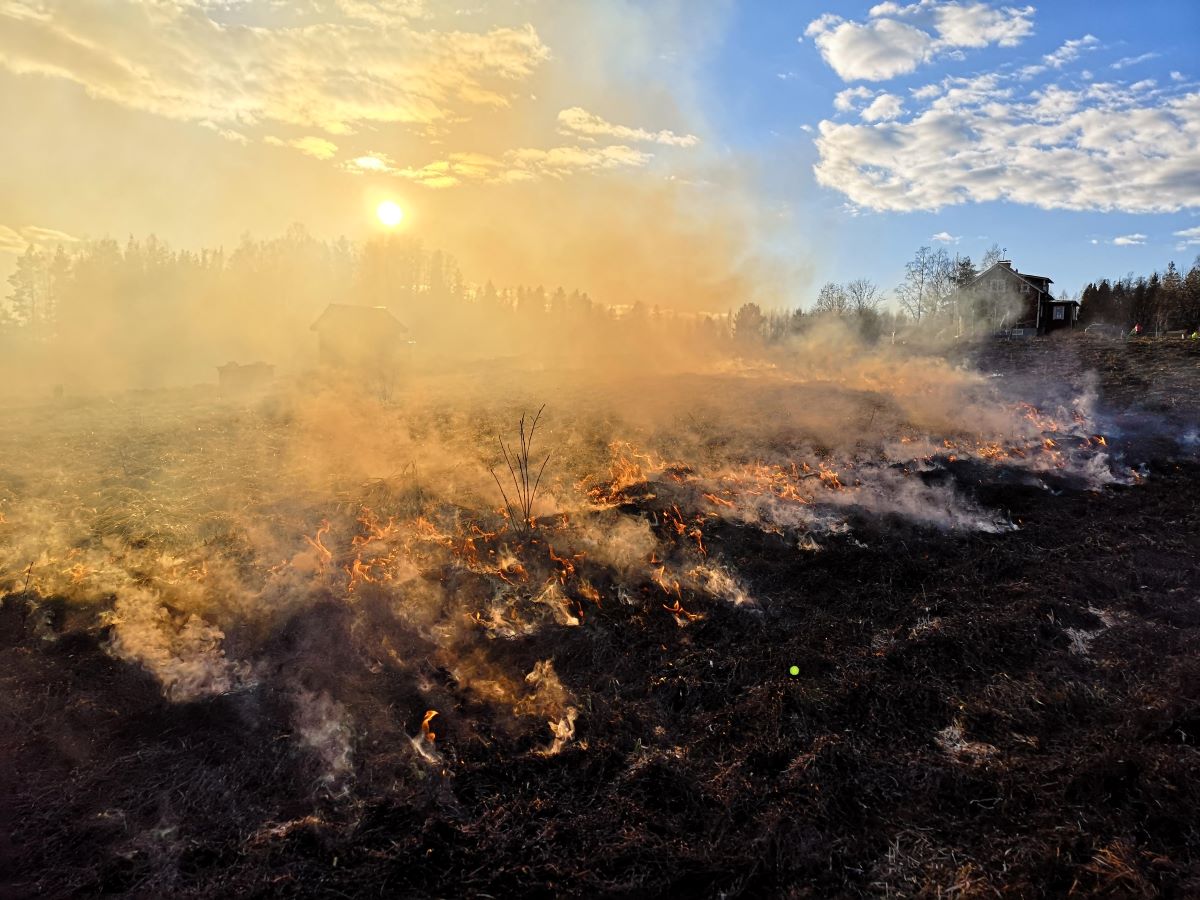Wildfire warning
Finnish Meteorological Institute gives a wildfire warning when the terrain is dry. When a wildfire warning is in force, it is forbidden to start an open fire. Wildfire warning replaced the separate grass fire and forest fire warnings from the beginning of 2024.
There are three different level of wildfire warnings (yellow, orange and red). They all refer in law to the same thing, that it is forbidden to start open fire. Probability for large and quickly progressive forest fires increase, when it is orange or red warning.
A previously used grass fire symbol is now used as a wildfire warning symbol.
A wildfire warning is usually given and cancelled midnight at 00. The warnings are specific to each province. Municipality-specific warnings may also be given in Northern Ostrobothnia (mainly for Kuusamo, Taivalkoski and Pudasjärvi) and in Lapland.
Wildfire warnings are issued using an index calculated by means of a model that describes moisture conditions in the top soil layer measuring 3-6 centimetres in thickness. The input data for the model includes precipitation and air temperature.
Read more about the wildfire index. Most often, the first wild fire warnings of the year are issued in April. The warning season ends in September or at the latest in early October.

Precautions during a wildfire warning
Open fires must not be lit during a wildfire warning or if conditions are such that there is an obvious risk of wildfire or other fire due to drought, wind or other cause. An open fire means a campfire or other similar use of fire from which it is possible for the fire to escape through the ground or by sparking (Section 6 of the Rescue Act).
It is not allowed to make an open fire without landowners permission. So starting an open fire is not part of everyone's rights.
A city may have an explicit ban on open fires in places other than those specifically designated for that purpose.
Municipal environment boards have issued municipal regulations and guidelines for burning garden waste. For instance, some municipalities have imposed a total ban on burning twigs. Controlled silvicultural burning of forest always requires the permission of the duty officer at the regional rescue department as well as the use of fire, which makes up a significant amount of smoke.